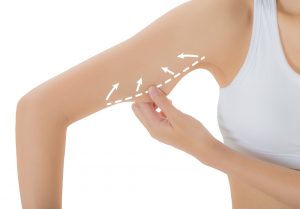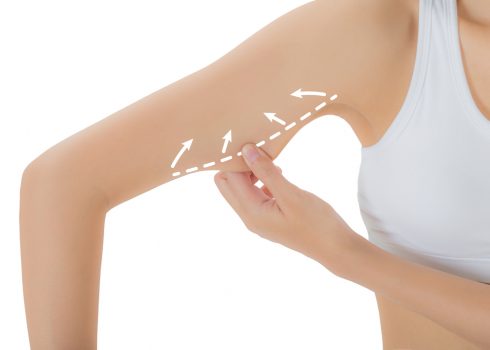What Is Liposuction?
‘Liposuction’/‘Liposculpture suction’/‘Lipectomy’ is a cosmetic plastic surgery to flush out the excess fat from the human body. This process may be carried out for refining body shape or for treatment of various skin/body problems.
Some commonly used methods by Cosmetic Surgeons are-
- Tumescent Liposuction
A plastic surgeon will inject an anesthetic “tumescent” solution into the treatment area to curtail bleeding and discomfort during the procedure, but can often be performed with local anesthesia.
- Ultrasound-Assisted Liposuction
Ultrasound energy breaks down the fatty tissue and loosens it from the body, allowing easier removal of a larger amount of fat.
- Laser-Assisted Liposuction
These techniques use laser energy to help extricate fat cells.
- Suction-Assisted Liposuction
This technique makes use of a vacuum-like device to help remove the fat.

How Is Liposuction Beneficial?
Liposuction is definitely not a solution for obesity or an alternative for diet & exercise. It is a method for eliminating excess fat deposits and improving body proportion in-
- Cheeks, chin and neck
- Upper arms
- Chest area
- Abdomen & waist
- Hips and buttocks
- Thighs
- Inner knee
Am I An Eligible Candidate?
In order to be eligible for this process, you need to be:
- a healthy individual with no severe medical conditions that can impair healing
- an adult within 30% of the ideal weight with a firm, elastic skin & a good muscle tone
- a non-smoker
- a person excess fat accumulation located on the body that doesn’t respond to diet or exercise
The Liposuction Process…
Preparation
- Undergo a medical examination
- Quit smoking
- Take/alter certain medications like aspirin, anti-inflammatory drugs and herbal supplements which can increase bleeding
Procedure Involved
Anesthesia
Medications are examined for your comfort during the surgical procedure. The choices include local anesthesia, intravenous sedation or general anesthesia.
The Incision
First, diluted local anesthesia is injected to reduce bleeding and pain.
Second, a thin hollow tube (cannula) is inserted through the incisions to loosen excess fat using a controlled back and forth motion.
Third, the fat is then suctioned out of the body using a syringe or surgical vacuum attached to the cannula.
Recovery And Expenditure
During your recovery phase, elastic bandages may cover the treatment area(s) once the procedure is complete in order to control swelling and compress the skin to the new body contours. Gradually, your new contours and enhanced self-image should continue to develop.
Liposuction cost varies on various factors. According to Dr. Carlos Ayala, ENT-Otolaryngologist in McAllen, the average cost of liposuction is $3,374. Also, the surgeon’s fee will be based on his or her experience, the geographic office location and the type of procedure used.
Liposuction costs may include:
- Medical tests
- Anesthesia fees
- Surgeon’s fee
- Hospital or surgical facility costs
- Post-surgery garments
Results Of The Procedure
The results of liposuction are generally unclear until the inflammation goes down. The swelling takes about 4 weeks to even months to settle in the area from where fat was removed.
People who work out and eat a balanced diet can expect permanent results. Those who gain weight after the surgery, especially, the patients who previously had fat accumulating in their hips might find that it becomes the new problem area.
Advantages Of Liposuction
Liposuction can treat problems like-
- Lymphedema: Swelling and pain caused due to excess fluid are known as lymph collecting in tissues.
- Gynecomastia: Sometimes fat gets accumulated under a man’s breasts.
- Lipodystrophy syndrome: Fat gets stored in one part of the body and disappears in another.
- Extreme Weight loss after becoming obsessed: A person with extreme obesity who loses at least 40% of their BMI may need solutions to remove an excessive amount of skin and other abnormalities.
- Lipomas: These are all benign, fatty tumors.
Important Article: The Top 5 Advantages Of Plastic Surgery
Risks Involved
Liposuction has risks, such as bleeding and a reaction to anesthesia like other major operations which include:
- Fluid accumulation- Temporary pockets of fluid can form beneath the skin. This fluid might require to be drained out with a needle.
- Numbness- You might feel temporary or permanent numbness and irritation in the affected area.
- Infection- Skin infections are rare but possible. A severe skin infection might be life-threatening.
- Internal puncture- Rarely, a cannula that penetrates too deep, might puncture an internal organ. This might require urgent surgical repair.
Dr. Carlos Ayala, an expert surgeon In Mcallen specialist, remarks that the other complications include life-threatening kidney & heart problems, deep vein thrombosis, organ perforation, bleeding, and infection. The complications increase if the surgeon is working on large surfaces of your body or doing multiple procedures during the same operation. Death occurs in about 1/10000 cases.

